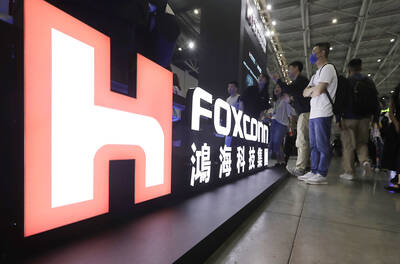A panel of leading computer scientists warned in a report issued last week that unless the US federal government significantly increased support for advanced research on supercomputing, the US would be unable to retain its lead on that technological front.
The panel of scientists, which was convened by the National Research Council, warned of a looming imbalance between hardware and software technology in high-performance computing.
"We are calling for a sustained and long-term investment to help develop advanced software and algorithms," said Steven Wallach, a computer designer at Chiaro Networks, a maker of an optical router for high-speed computing and a member of the panel.
The report, "Getting Up to Speed: The Future of Supercomputing," was based on an effort begun in 2002.
"Our situation has deteriorated during the past 10 years," said Susan Graham, a computer scientist at the University of California, Berkeley, who was co-chairwoman of the panel.
The authors of the report, which was prepared for the Energy Department, said they were recommending that the federal government spend US$140 million annually on new supercomputing technologies. The federal government currently spends about US$42 million each year, according to a recent report of the High End Computing Revitalization Task Force, a federal government working group.
"If we don't start doing something about this now, there will be nothing available in 10 years when we really need these systems," Graham said.
The BlueGene/L supercomputer from IBM was last week placed first on a list of the world's 500 fastest computers in a ranking announced at a high-performance-computing conference in Pittsburgh. The ranking is issued twice each year. The IBM machine, which is being installed at Lawrence Livermore National Laboratories in California, surpasses the speed set in 2002 by a Japanese supercomputer known as the Earth Simulator.
Overall, the Intel Corp consolidated its advantage in supercomputing. More than 320 systems on the top 500 list are based on Intel microprocessors, an increase from 287 Intel-based systems just six months ago.

A proposed 100 percent tariff on chip imports announced by US President Donald Trump could shift more of Taiwan’s semiconductor production overseas, a Taiwan Institute of Economic Research (TIER) researcher said yesterday. Trump’s tariff policy will accelerate the global semiconductor industry’s pace to establish roots in the US, leading to higher supply chain costs and ultimately raising prices of consumer electronics and creating uncertainty for future market demand, Arisa Liu (劉佩真) at the institute’s Taiwan Industry Economics Database said in a telephone interview. Trump’s move signals his intention to "restore the glory of the US semiconductor industry," Liu noted, saying that

On Ireland’s blustery western seaboard, researchers are gleefully flying giant kites — not for fun, but in the hope of generating renewable electricity and sparking a “revolution” in wind energy. “We use a kite to capture the wind and a generator at the bottom of it that captures the power,” said Padraic Doherty of Kitepower, the Dutch firm behind the venture. At its test site in operation since September 2023 near the small town of Bangor Erris, the team transports the vast 60-square-meter kite from a hangar across the lunar-like bogland to a generator. The kite is then attached by a

Foxconn Technology Co (鴻準精密), a metal casing supplier owned by Hon Hai Precision Industry Co (鴻海精密), yesterday announced plans to invest US$1 billion in the US over the next decade as part of its business transformation strategy. The Apple Inc supplier said in a statement that its board approved the investment on Thursday, as part of a transformation strategy focused on precision mold development, smart manufacturing, robotics and advanced automation. The strategy would have a strong emphasis on artificial intelligence (AI), the company added. The company said it aims to build a flexible, intelligent production ecosystem to boost competitiveness and sustainability. Foxconn

STILL UNCLEAR: Several aspects of the policy still need to be clarified, such as whether the exemptions would expand to related products, PwC Taiwan warned The TAIEX surged yesterday, led by gains in Taiwan Semiconductor Manufacturing Co (TSMC, 台積電), after US President Donald Trump announced a sweeping 100 percent tariff on imported semiconductors — while exempting companies operating or building plants in the US, which includes TSMC. The benchmark index jumped 556.41 points, or 2.37 percent, to close at 24,003.77, breaching the 24,000-point level and hitting its highest close this year, Taiwan Stock Exchange (TWSE) data showed. TSMC rose NT$55, or 4.89 percent, to close at a record NT$1,180, as the company is already investing heavily in a multibillion-dollar plant in Arizona that led investors to assume